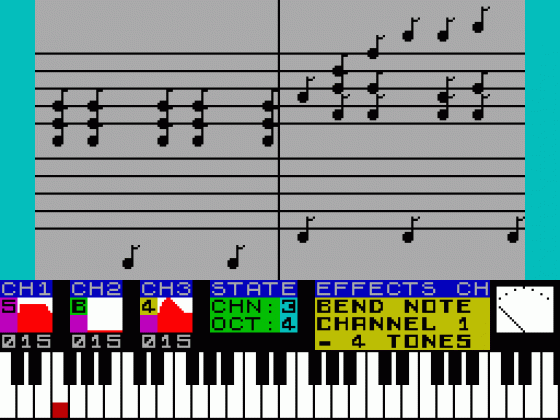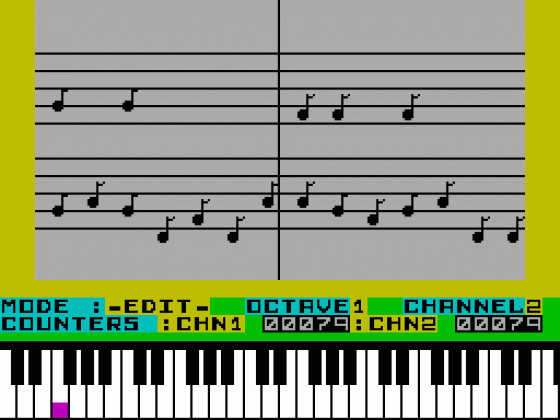
ZX Computing
 1st July 1986
1st July 1986
The Music Box
The Music Box from Melbourne House brings advanced music programming within the reach of anyone with a Spectrum 48K or 128K, even if they have very little knowledge of music. Apart from being a flexible music creator, it is also a programming aid because any composition can be compiled and saved for later use in your own programs.
There are two versions of the program on the cassette. The second version allows access to the special facilities of the 128 such as envelope shaping and RAM disk access.
The 48K version allows access to two voices, each spanning four octaves. The lower two rows of the keyboard are defined as a single octave musical keyboard for entering the notes. With a range of four semitones over the octave, the span is so wide that you can write some tunes without ever having to change your octave setting. The upper keys allow access to the special functions and voice or octave selection.

Selecting the Edit function from the menu screen reveals the main music making screen. A piano keyboard is depicted at the bottom of the picture under the array of windows which display the current status of the chosen voice. Above this is an extended musical stave on which the notes appear as they are played. The stave scrolls from right to left as each note is entered. The program only allows the entering of quavers but this is merely an arbitrary concession to traditional musical notation. If longer notes are required, it is possible to repeat a series of quavers set to the same pitch which will then be played as a continuous note. Shorter notes can be set by altering the tempo of the tune and extending the length of longer notes accordingly.
One of three percussion effects can be selected from the three set effects or these can be reshaped to suit your own requrements. These sounds use both voices so notes and percussion cannot be sounded at the same time.
The 128 version is much more versatile. Envelopes can be reshaped several times during a tune, notes can be bent and there is access to three voices. One of the voices may be reserved for the wider range of nine redefinable percussion sounds, but notes can still be added here and there if the composition demands it.
Although all compositions are depicted in the key of C major, this does not limit the range of tunes which can be played. The inclusion of semitones (the black keys) on the keyboard means that this restriction only limits the way in which the tunes are displayed on the stave.
The Music Box has been designed to be as user-friendly as possible and it certainly achieves its aims. The main problem for the musical novice will be deciding the relative length of each note but this skill will come with practice. The main adventage of this program is the compiler which allows the tune to be played constantly over a menu screen or note by note if you want to integrate it wth an action screen.
This program should appeal to both the budding Beethovens out there or the games writer who wants to add the extra ingredient of music to give the final polish to their gleaming creation.



